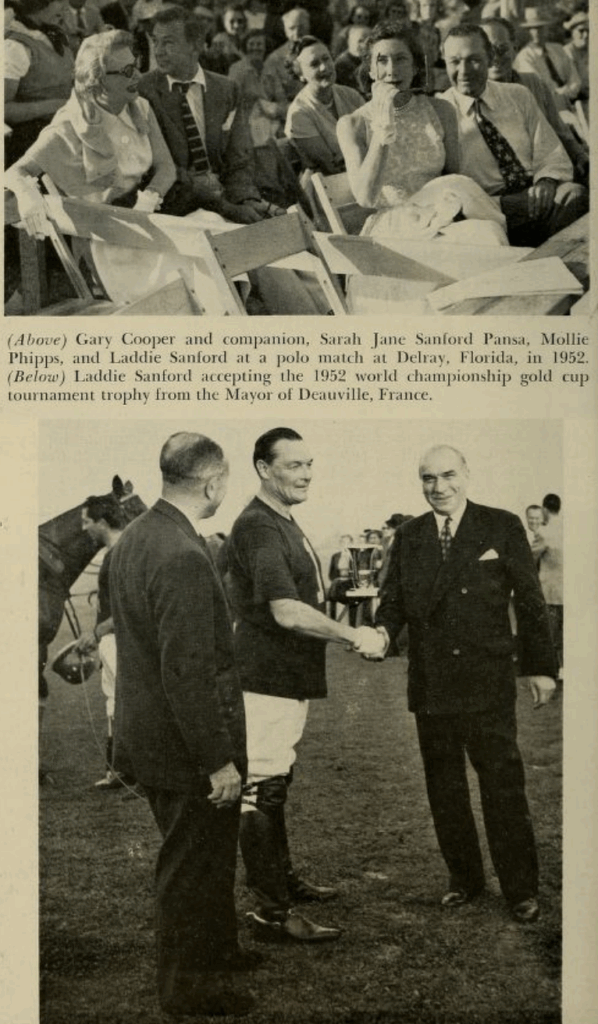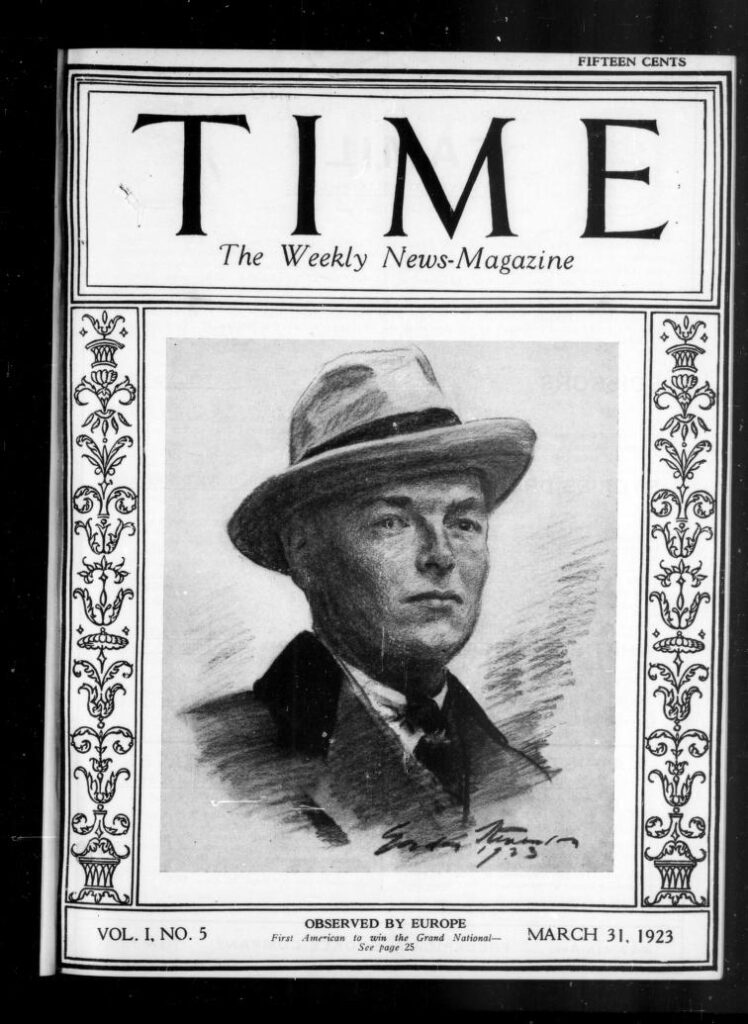In my last article on the rather remarkable life of Amsterdam carpet heiress Gertrude Sanford Legendre, I made brief mention of her elder brother, Stephen “Laddie” Sanford. I also mentioned that both were involved in hunting of all sorts, including trophy hunting for big game, and while I wrote about safaris in Africa, they made more mundane hunting trips as well, if Canada, Alaska, and various parts of Asia can be considered mundane. Growing up in South Carolina, hunting (“or at least bird-shooting,” Gertrude wrote) was part of their upbringing. As they got older, Laddie often accompanied Gertie on her hunting expeditions.

Laddie, while he did go into the family carpet business, was widely and probably better known as a polo player, and it is under that designation that the press of 1947 seemed to think he would be most recognizable to the public – for quite a number of newspapers all ran a small blurb in November 1947 announcing that “Polo Player Nabbed as Game Violator,” or “Waterfowl Law Snags Socialite,” or some similar headline.
From Albany, the Associated Press reported that “Stephen (Laddie) Sanford, socialite polo player, and two fellow-hunters paid $525 in fines for violation of the migratory waterfowl law in mid-October,” as disclosed by the New York State Conservation Department (a predecessor to today’s Department of Environmental Conservation).
“The department said Sanford, of Palm Beach, Fla.; his sister, Mrs. Sidney Legendre of Mt. Holly, S.C., and Thomas Estam of Monkton, Md., bagged a legal Canadian limit of geese but transported 30 in excess of the American Limit across the border. The three landed at La Guardia Field on a flight from the Hudsons Bay area with their combined bag of 45 blue and snow geese, the department said. Each paid $175 in settlement for individual violations of transporting 10 geese each in excess of the legal limit, the department added. “
Another version of the article identified Laddie as an “internationally known polo player.” He was that, and an avid horseman. In 1923, Laddie was featured on the cover of Time Magazine for being the first American to win The Grand National steeplechase in England, which has run since 1839. (It was Time’s fifth week of publication. The illustration, by the way, is by Gordon Stevenson. And if you want to read an interesting story about his art and his family, check this out.) Time wrote:
An American Wins Where Kings and Peers Have Failed
The nine days’ talk of London is Stephen (“Laddie”) Sanford, American sportsman. Sanford’s 13-year-old gelding, Sergeant Murphy (by General Symons, out of Rose Craft, English bred) won the Grand National, the steeplechase classic of the world, over the Aintree Course, near Liverpool, the most hazardous four miles known to the racing turf. It was the first time (and this was the 83rd Grand National) that an American horse has won. Out of 28 starters only seven horses finished. Sergeant Murphy went to the pole at odds of 100 to 6 against and finished three lengths beyond the field.

Laddie was in the family carpet business in Amsterdam from sometime the mid-1920s through its merger with Bigelow in 1929, and remained on the board of the merged companies – but his business associations are barely mentioned in family histories or newspapers; it’s always about the horses. A 1969 history of the family, “The Sanfords of Amsterdam: The Biography of a Family in Americana,” opens with the story of Laddie’s steeplechase win. Then it segues into the carpet-making that made the family rich and famous.
That $525 in 1948 was about $7000 today, by the way – not nothing, but nothing they couldn’t afford. An article running the same day in one of the newspapers reported that the Conservation Department had collected $8216.50 in fines from “the fall crop of game law violators,” which numbered 343 people; in that perspective, the Sanford fine was large indeed.

Leave a Reply